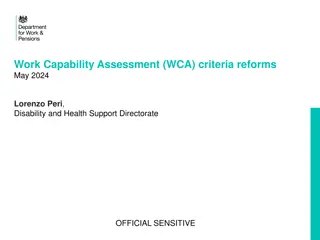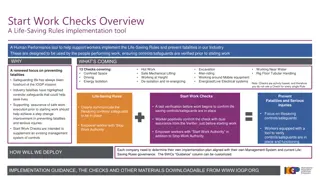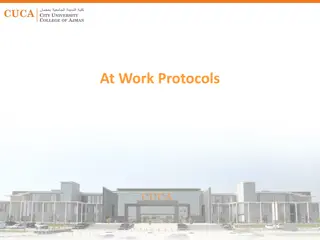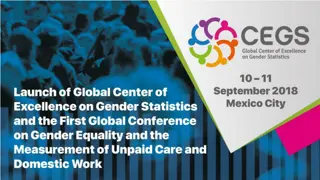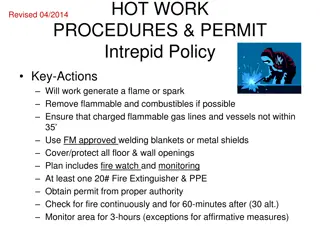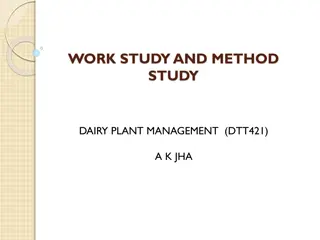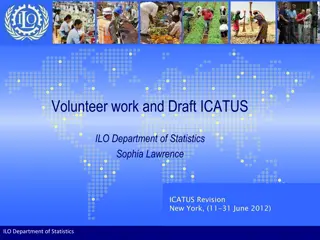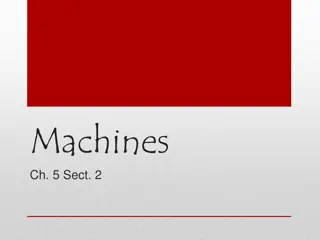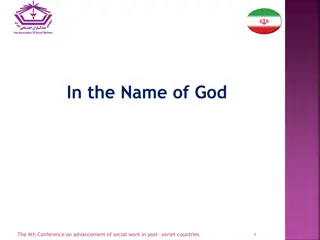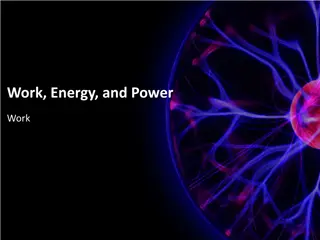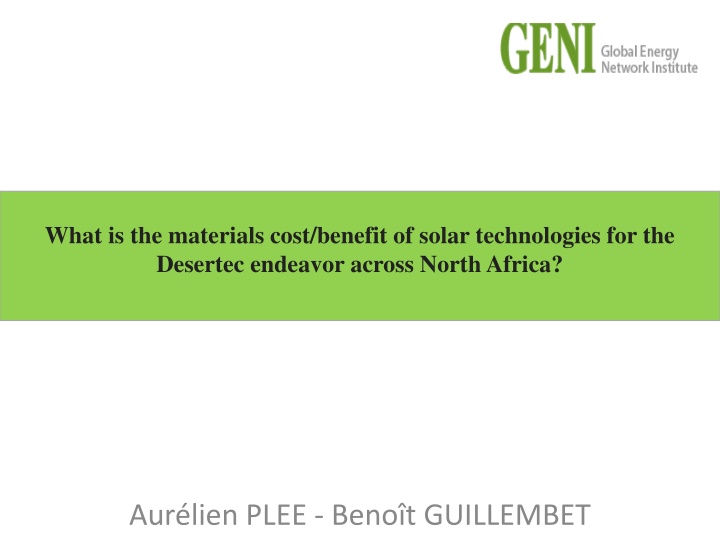
Materials Cost-Benefit of Solar Technologies for Desertec Endeavor
"Explore the materials cost-benefit analysis of solar technologies for the ambitious Desertec project across North Africa, aiming to harness massive renewable energy potential and address water scarcity through innovative solutions."
Download Presentation

Please find below an Image/Link to download the presentation.
The content on the website is provided AS IS for your information and personal use only. It may not be sold, licensed, or shared on other websites without obtaining consent from the author. If you encounter any issues during the download, it is possible that the publisher has removed the file from their server.
You are allowed to download the files provided on this website for personal or commercial use, subject to the condition that they are used lawfully. All files are the property of their respective owners.
The content on the website is provided AS IS for your information and personal use only. It may not be sold, licensed, or shared on other websites without obtaining consent from the author.
E N D
Presentation Transcript
What is the materials cost/benefit of solar technologies for the Desertec endeavor across North Africa? Aur lien PLEE - Beno t GUILLEMBET
Introduction : DESERTEC project Massive renewable energy plants in Northern Africa and the Middle East
Introduction : DESERTEC project 700TWh by 2050 - around 15% of EU consumption 100 GW of solar power. US$526bn, inc. $430bn for solar facilities
Solar technologies available Technology Current cost ($ cents/KWh) Cost by 2020 ($ cents/KWh) Solar power tower 10 5.47 Parabolic through 10 3.5 to 4.3
Solar technologies available Technology Current cost ($ cents/KWh) Cost by 2020 ($ cents/KWh) CPV 18 to 28 12 to 17 PV systems 4.2 ??
Satisfaction of DESERTEC needs Morocco : 40% renewable in 2020 500MW CSP (Ouarzazate) Algeria : 40% renewable in 2030 22GW by 2030 (12GW for domestic demand and 10GW for export) 25MW parabolic through (Hassi R Mel) Tunisia : 4.7 GW by 2030 2GW Tunur Other countries of MENA (Middle East and North Africa) : 7.2 GW Estimation : 470 GW by 2050 for MENA Average planned capacities by 2017 (MW)
Satisfaction of DESERTEC needs Set up a new electricity grid : MedGrid, based on HVDC (High Voltage Direct Current) Future green energy grid
Water desalination Arabian world : 5% of the world's population / 1% of fresh water. 18 of the 22 Arabian countries : water shortages / water distress by 2050 Water resources per habitant in MENA region
Water desalination through CSP Principle : once the water is boiled in CSP, salt is separated from water; so you have drinking water Competitive compared to fuel oil at $50/barrel (August, 30th2012 : $95/barrel) CSP desalination plants can supply up to several 100,000 m /day (3,5 million ft /day) of desalted water The huge solar energy potential of MENA can easily produce the energy necessary to provide the growing freshwater deficits in that region Water resources per habitant in MENA region
Conclusion DESERTEC : development of green energy for both MENA countries and EU Enable the economic development of MENA countries, by selling energy produced to UE Create jobs in MENA (ex: 20,000 jobs for 2GW Tunur plant in Tunisia) Reduction of greenhouse gases, long term reduction of electricity cost, less dependance regarding fossil fuels Enable to provide drinking water to Arabian countries DESERTEC : a win-win deal Thank you for listening




